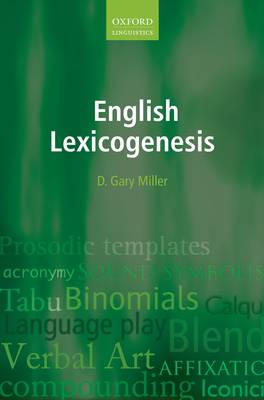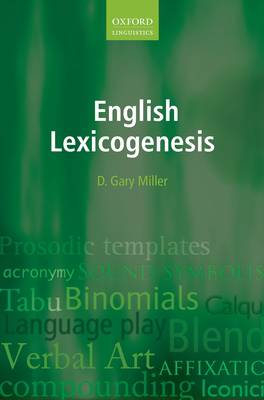
- Afhalen na 1 uur in een winkel met voorraad
- Gratis thuislevering in België vanaf € 30
- Ruim aanbod met 7 miljoen producten
- Afhalen na 1 uur in een winkel met voorraad
- Gratis thuislevering in België vanaf € 30
- Ruim aanbod met 7 miljoen producten
Zoeken
Omschrijving
English Lexicogenesis investigates the processes by which novel words are coined in English, and how they are variously discarded or adopted, and frequently then adapted. Gary Miller looks at the roles of affixation, compounding, clipping, and blending in the history of lexicogenesis, including processes taking place right now. The first four chapters consider English morphology and the recent types of word formation in English: the first introduces the morphological terminology used in the work and the book's theoretical perspectives; chapter 2 discusses productivity and constraints on derivations; chapter 3 describes the basic typology of English compounds; and chapter 4 considers the role of particles in word formation and recent construct types specific to English. Chapters 5 and 6 focus respectively on analogical and imaginative aspects of neologistic creation and the roles of metaphor and metonymy. In chapters 7 and 8 the author considers the influence of folk etymology and tabu, and the cycle of loss of expressivity and its renewal. After outlining the phonological structure of words and its role in word abridgements, he examines the acoustic and perceptual motivation of word forms. He then devotes four chapters to aspects and functions of truncation and to reduplicative and conjunctive formations. In the final chapter he looks at the relationship between core and expressive morphology and the role of punning and other forms of language play, before summarizing his arguments and findings and setting out avenues for future research.
Specificaties
Betrokkenen
- Auteur(s):
- Uitgeverij:
Inhoud
- Aantal bladzijden:
- 336
- Taal:
- Engels
- Reeks:
Eigenschappen
- Productcode (EAN):
- 9780199689880
- Verschijningsdatum:
- 20/04/2014
- Uitvoering:
- Hardcover
- Formaat:
- Genaaid
- Afmetingen:
- 163 mm x 236 mm
- Gewicht:
- 657 g

Alleen bij Standaard Boekhandel
+ 563 punten op je klantenkaart van Standaard Boekhandel
Beoordelingen
We publiceren alleen reviews die voldoen aan de voorwaarden voor reviews. Bekijk onze voorwaarden voor reviews.








